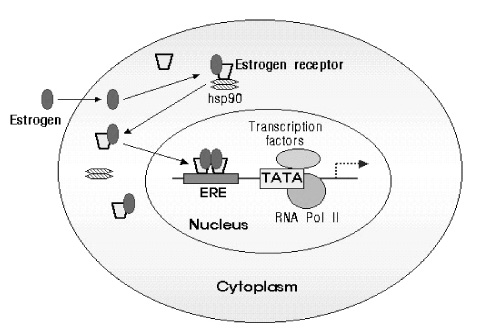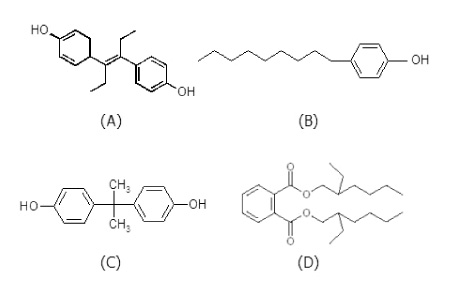J Korean Endocr Soc.
2009 Mar;24(1):7-14. 10.3803/jkes.2009.24.1.7.
An Overview and Future Perspective on Endocrine Disruptors
- Affiliations
-
- 1Environmental Exposure Assessment Division, National Institute of Environmental Research, Korea.
- 2Department of Pharmacology, Institute for Basic of Medical Science (IBMS), School of Medicine, Kyung Hee University, Korea.
- KMID: 1468489
- DOI: http://doi.org/10.3803/jkes.2009.24.1.7
Abstract
- No abstract available.
MeSH Terms
Figure
Reference
-
1. Colborn T, Dumanoski D, Myers JP. Our stolen future: are we threatening our fertility, intelligence, and survival?: a scientific detective story. 1996. 29. New York: Dutton Publishing;227–229. No.4.2. Workshop Report. 1997. In : Smithsonian Institution: International Workshop on Endocrine Disruptors; 23-24 Jan.; Washington D.C. USA. Smithsonian Institution.3. Ankley GT, Johnson RD, Toth G, Folman LC, Detenbeck NE, Bradbury SP. Development of a research strategy for assessing the ecological risk of endocrine disruptors. Toxicolology. 1997. 1:71–106.4. Kavlock RJ, Daston GP, DeRosa C, Fenner-Crisp P, Gray LE, Kaattari S, Lucier G, Luster M, Mac MJ, Maczka C, Miller R, Moore J, Rolland R, Scott G, Sheehan DM, Sinks T, Tilson HA. Research needs for the risk assessment of health and environmental effects of endocrine disruptors: a report of the U.S. EPA-sponsored workshop. Environ Health Perspect. 1996. 104:Suppl 4. 715–740.5. Thomas KV, Hurst MR, Matthiessen P, Waldock MJ. Characterization of estrogenic compounds in water samples collected from United Kingdom estuaries. Environ Toxicol Chem. 2001. 20:2165–2170.6. Oehlmann J, Oetken M, Schulte-Oehlmann U. A critical evaluation of the environmental risk assessment for plasticizers in the freshwater environment in Europe, with special emphasis on bisphenol A and endocrine disruption. Environ Res. 2008. 108:140–149.7. Rogan WJ, Ragan NB. Evidence of effects of environmental chemicals on the endocrine system in children. Pediatrics. 2003. 112:247–252.8. National Research Council. Hormonally Active Agents in the Environment. 1999. Washington DC: National Academy Press.9. Safe SH. Endocrine disruptors and human health--is there a problem? An update. Environ Health Perspect. 2000. 108:487–493.10. Golden RJ, Noller KL, Titus-Ernstoff L, Kaufman RH, Mittendorf R, Stillman R, Reese EA. Environmental endocrine modulators and human health: an assessment of the biological evidence. Crit Rev Toxicol. 1998. 28:109–227.11. Folmar LC, Denslow ND, Rao V, Chow M, Crain DA, Enblom J, Marcino J, Guillette LJ Jr. : Vitellogenin induction and reduced serum testosterone concentrations in feral male carp (Cyprinus carpio) captured near a major metropolitan sewage treatment plant. Environ Health Perspect. 1996. 104:1096–1101.12. Lee C, Na JG, Lee KC, Park K. Choriogenin mRNA induction in male medaka, Oryzias latipes as a biomarker of endocrine disruption. Aquat Toxicol. 2002. 61:233–241.13. Kelce WR, Stone CR, Laws SC, Gray LE, Kemppainen JA, Wilson EM. Persistent DDT metabolite p,p'-DDE is a potent androgen receptor antagonist. Nature. 1995. 375:581–585.14. Zhang Z, Hu J. Effects of p,p'-DDE exposure on gonadal development and gene expression in Japanese medaka (Oryzias latipes). J Environ Sci (China). 2008. 20:347–352.15. McGlynn KA, Quraishi SM, Graubard BI, Weber JP, Rubertone MV, Erickson RL. Persistent organochlorine pesticides and risk of testicular germ cell tumors. J Natl Cancer Inst. 2008. 100:663–671.16. Davies E, Omer S, Morris JF, Christian HC. The influence of 17beta-estradiol on annexin 1 expression in the anterior pituitary of the female rat and in a folliculo-stellate cell line. J Endocrinol. 2007. 192:429–442.17. Hendry WJ 3rd, DeBrot BL, Zheng X, Branham WS, Sheehan DM. Differential activity of diethylstilbestrol versus estradiol as neonatal endocrine disruptors in the female hamster (Mesocricetus auratus) reproductive tract. Biol Reprod. 1999. 61:91–100.18. Newbold RR, Jefferson WN, Grissom SF, Padilla-Banks E, Snyder RJ, Lobenhofer EK. Developmental exposure to diethylstilbestrol alters uterine gene expression that may be associated with uterine neoplasia later in life. Mol Carcinog. 2007. 46:783–796.19. Okai Y, Sato EF, Higashi-Okai K, Inoue M. Enhancing effect of the endocrine disruptor para-nonylphenol on the generation of reactive oxygen species in human blood neutrophils. Environ Health Perspect. 2004. 112:553–556.20. Warner M, Eskenazi B, Mocarelli P, Gerthoux PM, Samuels S, Needham L, Patterson D, Brambilla P. Serum dioxin concentrations and breast cancer risk in the Seveso Women's Health Study. Environ Health Perspect. 2002. 110:625–628.21. Ho SM, Tang WY, Belmonte de Frausto J, Prins GS. Developmental exposure to estradiol and bisphenol A increases susceptibility to prostate carcinogenesis and epigenetically regulates phosphodiesterase type 4 variant 4. Cancer Res. 2006. 66:5624–5632.22. Iguchi T, Watanabe H, Katsu Y. Toxicogenomics and ecotoxicogenomics for studying endocrine disruption and basic biology. Gen Comp Endocrinol. 2007. 153:25–29.23. Phillips KP, Foster WG, Leiss W, Sahni V, Karyakina N, Turner MC, Kacew S, Krewski D. Assessing and managing risks arising from exposure to endocrine-active chemicals. J Toxicol Environ Health B Crit Rev. 2008. 11:351–372.24. Benson WH, Di Giulio RT. SETAC. Genomic approaches for cross-species extrapolation in toxicology. 2004. CRC press.25. Mattingly CJ, Rosenstein MC, Colby GT, Forrest JN Jr, Boyer JL. The Comparative Toxicogenomics Database (CTD): a resource for comparative toxicological studies. J Exp Zoolog A Comp Exp Biol. 2006. 305:689–692.




